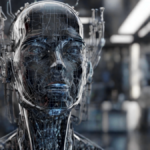The most recent breakthrough in artificial intelligence (AI) presents novel opportunities for developing AI agents, independent applications, or software that interacts with and impacts the external environment.
These agents are now ubiquitous, ranging from state-of-the-art driver-assistance systems to smart speakers capable of generating to-do lists or providing real-time weather and traffic updates. For example, iRobot’s Roomba is an intelligent robot that autonomously cleans floors using cameras and algorithms. Similarly, John Deere’s See & Spray machines identify and spray weeds on agricultural fields with precision, eliminating the need for herbicides through computer vision technology.
In the immediate future, autonomous AI agents will collaborate with individuals across various domains such as banking and healthcare. Instead of displacing humans, these agents will enhance our capabilities, save time, reduce human errors, ultimately boosting productivity and even saving lives.
Distinguished from traditional computer applications or machine learning algorithms, agents possess the ability to perceive and respond to their environment. They exhibit a level of autonomy and interactivity that enables them to make decisions and take actions based on the information they receive.
Initially, agents were confined to simple rule-based tasks like adjusting room temperature by turning on the heater or air conditioning as needed. These early agents followed predetermined rules and behaviors.
More recently, agents have been trained through trial and error using reinforcement learning, which provides rewards or penalties based on their actions in different environments. Over time, agents refine their behavior to maximize rewards and minimize penalties.
By pitting agents against each other in millions of games, DeepMind, a prominent AI research company, successfully mastered complex games like Go. These agents acquired a level of understanding of the game’s principles and strategies surpassing that of a human player.
The advent of large language models (LLMs) represents the latest advancement in AI agent technology. LLMs such as OpenAI’s GPT-4 have the remarkable ability to process and generate human-like language based on extensive training data. These models can answer queries, provide suggestions, and even write code due to their training on vast datasets, including a significant portion of the internet.
Furthermore, LLMs can interact with other software programs by generating code to call functions from different APIs. Open-source automation frameworks like LangChain currently enable LLMs to collaborate with various databases and software to accomplish complex tasks. OpenAI has also introduced the Assistant API, which acts as an advisor and leverages tools like Dall-E3, Code Interpreter, Browse with Bing, and user-defined features that can be API calls to external programs. Additionally, OpenAI offers the GPT software, allowing users to create customized AI agents and a GPT Store where users can share and monetize their creations. Related markets have emerged, with over 10,000 accessible GPTs in one marketplace.
The integration of LLMs into AI agents has the potential to power a range of intelligent systems capable of interacting with and controlling diverse hardware and software components.
For instance, software developers can instruct an agent to identify specific functions within code, and the agent can then modify these functions across the entire codebase using a code editing tool. Engineers can also request the agent to conduct tests to ensure no bugs were introduced during the code refactoring process.
The adoption of “world models” is another area of advancement that enables AI agents to comprehend and interact with the complexities of real-world environments. By creating real-time representations of surroundings like streets, vehicles, pedestrians, signs, etc., agents can predict future states of the environment and make informed decisions. These planet models find applications in autonomous driving, among other fields.
Agents can simulate potential scenarios, make intelligent decisions to achieve set objectives, and continuously learn and adapt from their experiences, thanks to world models.
These innovative approaches signify a departure from traditional programming methods towards incorporating learning and interaction in novel ways. They open up numerous possibilities for end-to-end workflow automation without human intervention, allowing individuals to focus on more critical tasks.
For instance, AI agents have the potential to revolutionize eldercare by monitoring the daily routines of solitary individuals, analyzing movements through spatial modeling, and alerting caregivers to anomalies. Agents can remind individuals to take medications and engage in social activities, enhancing the quality of care for the elderly.
Another intriguing aspect of AI agents is their ability to collaborate in teams. Just as businesses assemble teams of individuals with diverse skills and expertise, AI agents can be created and trained to excel in specific tasks. These agents can communicate, exchange information, and work together as a cohesive group.
Imagine a warehouse scenario where a team of intelligent robots is responsible for sorting and transporting items. Each robot, equipped with advanced sensors and machine vision capabilities, performs a specialized task such as package classification or path optimization. By leveraging their unique skills, these AI agents collaborate efficiently to manage warehouse operations effectively, addressing the current labor shortages in the supply chain industry.
Multi-agent systems, already implemented by companies like Amazon and Ocado in their warehouses, enhance productivity and efficiency through collaborative robot teams.
The concept of AI teams in multi-agent systems extends beyond theoretical applications, offering new research opportunities in fields like social physics and psychology. These systems facilitate the design of complex systems through large-scale simulations and help in understanding team dynamics for improved collaboration.
To ensure responsible deployment, technical challenges such as response times, scalability, and resource requirements must be addressed. Regulations governing the use of AI agents must also be established. However, as technology progresses, productivity is expected to rise. AI agents hold the promise of enhancing worker satisfaction by automating mundane tasks, allowing individuals to focus on more meaningful responsibilities.
Businesses need to reassess their operational processes, invest in requisite technologies, and provide training to employees for effective AI utilization.
The advent of AI agents heralds a new era of advanced technology, industrial transformation, and human empowerment, leading to heightened levels of productivity and innovation. These agents, designed for autonomous operation, are not a signal of human obsolescence but rather a testament to our ingenuity. Humans remain indispensable in this evolving landscape.






